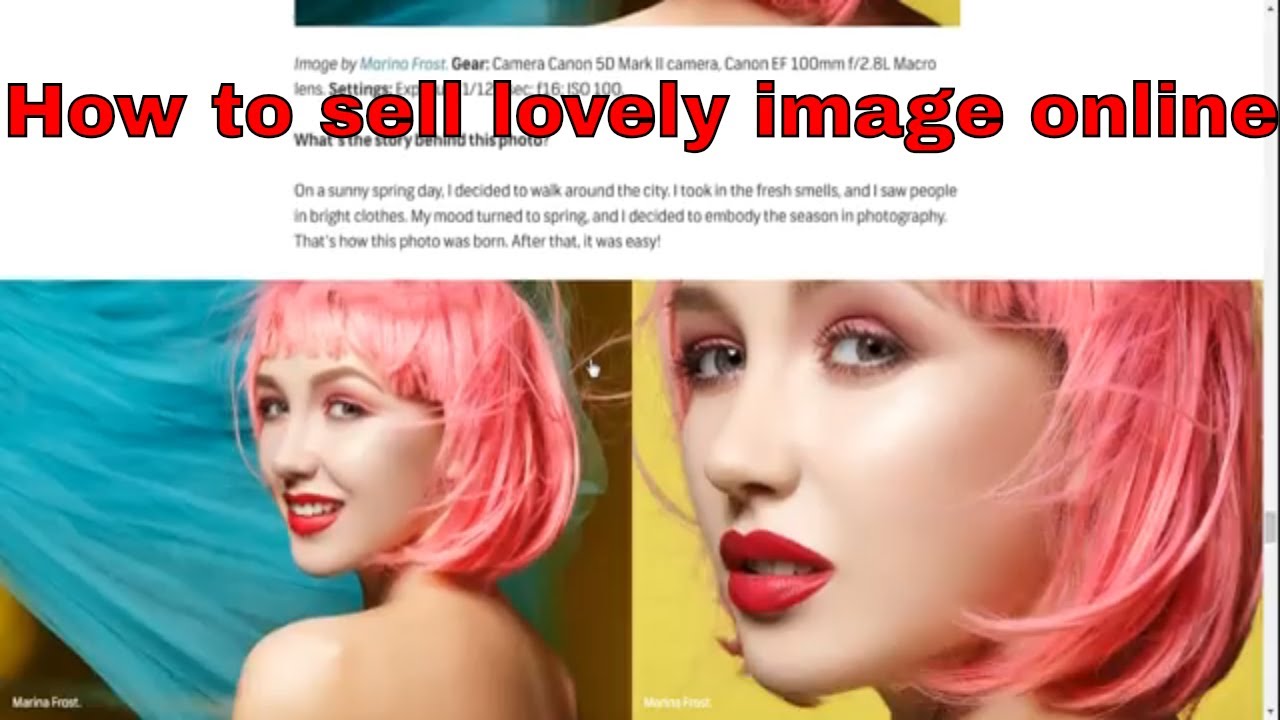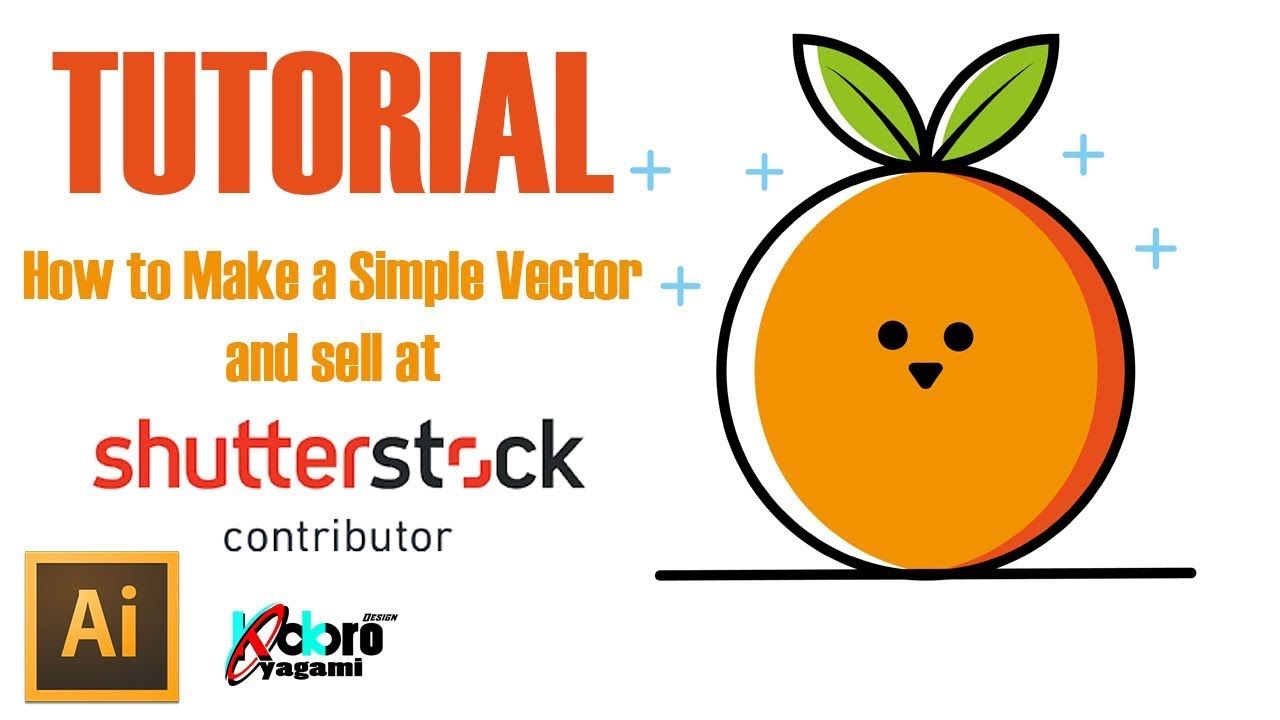Thinking about turning your artwork into a steady income stream? Selling illustrations on Shutterstock is a fantastic way for artists to reach a global audience and earn passive income. Whether you’re a seasoned illustrator or just starting out, Shutterstock offers a user-friendly platform to showcase your creativity and make money from your passion. In this guide, we’ll walk through everything you need to know to succeed— from understanding the platform to meeting its requirements. Let’s dive into the world of digital illustration sales and turn those sketches into cash!
Understanding Shutterstock’s Requirements for Illustrators

Before you start uploading your artwork, it’s essential to understand what Shutterstock expects from its contributors. The platform maintains specific standards to ensure that all images are high quality and suitable for commercial use. Here’s what you need to keep in mind:
1. Image Quality and Technical Specs
- Resolution: Minimum of 4 megapixels (e.g., 2400×1600 pixels), but higher resolutions are preferred for versatility.
- File Format: JPEG for images, with a resolution of at least 300 dpi for quality printing purposes.
- Color Profile: sRGB color space is standard to ensure accurate colors across devices.
- Compression: Keep JPEG compression low to avoid artifacts. Aim for a high-quality setting.
2. Content Guidelines
Shutterstock is strict about the type of content it accepts:
- Originality: Your illustrations must be your own work. Plagiarized or heavily inspired images won’t pass.
- Relevance: Ensure your images are clear, focused, and free of distracting elements.
- Commercial Viability: Content should be versatile and useful for marketing, advertising, or editorial purposes.
3. Model and Property Releases
If your illustrations feature recognizable people, private property, or copyrighted items, you’ll need to provide appropriate releases. Shutterstock is quite strict about this to avoid legal issues down the line.
4. Model and Concept Diversity
Shutterstock encourages a diverse portfolio. Including various themes, styles, and concepts will make your portfolio more appealing to buyers and increase your chances of sales.
5. Submission Process and Review
After uploading, each illustration undergoes a review process where Shutterstock’s team checks for quality, compliance, and originality. This process can take a few days. Once approved, your artwork becomes available for licensing worldwide. Keep in mind, consistent quality and adherence to guidelines will improve your approval rate and help you build a successful portfolio.
By understanding and meeting these requirements, you’ll set yourself up for success and maximize your earning potential on Shutterstock. Ready to start creating and uploading your stunning illustrations? Let’s go!
Preparing Your Illustrations for Submission

So, you’ve got your collection of stunning illustrations ready—fantastic! But before you hit that submit button on Shutterstock, there are a few important steps to ensure your work stands out and meets their standards. Preparing your illustrations properly not only increases your chances of acceptance but also helps your images perform well once they’re live.
First things first, check Shutterstock’s submission guidelines. They have specific requirements regarding image resolution, file format, and content. For most illustrations, you’ll want to provide high-resolution files—usually at least 4 megapixels, but it’s safer to go higher if possible. JPEG is the preferred format, with a quality setting that balances clarity and file size.
Next, consider the technical aspects:
- Color Mode: Use RGB color mode since it’s optimized for digital platforms.
- File Naming: Name your files clearly and consistently. For example, “sunset-beach-illustration_01.jpg”.
- Metadata: Add descriptive titles, keywords, and relevant categories. This helps buyers find your work easily.
Now, let’s talk about the actual image quality:
Ensure your illustrations are sharp, clean, and free of artifacts. Remove any unnecessary elements or background noise. If your artwork includes text, double-check for typos and clarity. For line art or vector illustrations, export in appropriate formats that retain sharpness, like PNG or SVG, if needed, but remember that Shutterstock primarily accepts JPEGs for raster images.
Finally, consider adding a few sample previews—thumbnails that showcase your illustration in different contexts or color variations if applicable. This gives buyers a better idea of how your artwork can be used.
By taking these steps, you’re putting your best foot forward. Well-prepared illustrations not only meet submission standards but also make your portfolio look professional and trustworthy. Remember, first impressions matter online, so invest a little extra time in this phase—it pays off!
Best Practices for Creating Marketable Illustrations

Creating illustrations that sell is both an art and a science. It’s not just about making beautiful images; it’s about understanding what buyers are looking for and how to position your work to meet those needs. Here are some tried-and-true best practices to help you craft marketable, in-demand illustrations.
Know Your Audience—think about who will be using your illustrations. Are they for corporate websites, bloggers, app developers, or social media content creators? Tailoring your style and themes to match market demands increases your chances of sales.
Next, focus on timely and versatile themes. Popular topics include:
- Business and finance
- Health and wellness
- Technology and innovation
- Environmental issues
- Celebrations and holidays
Creating a variety of styles also helps. Some buyers prefer minimalist line art, while others look for vibrant, detailed illustrations. Experiment with different color palettes, line weights, and compositions to diversify your portfolio.
Here are some additional tips to boost your illustration’s marketability:
- Stay on Trend: Keep an eye on current design trends and incorporate them subtly into your work.
- Maintain Consistency: Develop a recognizable style or theme across your portfolio to attract repeat buyers.
- Focus on Quality: High-quality, polished illustrations outperform rushed or amateurish work. Invest time in refining your images.
- Use Clear, Simple Composition: Avoid overly complex scenes that are hard to interpret. Clear visuals communicate ideas quickly.
- Include Diverse Subjects: Reflect different cultures, ages, and backgrounds to appeal to a broader audience.
Another key aspect is understanding the needs of the marketplace. Browse Shutterstock’s top-selling images and categories to see what’s trending. Pay attention to popular color schemes, themes, and styles. This doesn’t mean copying but rather drawing inspiration to create fresh, relevant content.
Remember, the goal is to create illustrations that are not only beautiful but also functional and adaptable. The more your work aligns with what buyers are searching for, the higher your chances of making sales. Keep learning, stay inspired, and adapt your style as trends evolve. Happy illustrating!
Uploading and Tagging Your Illustrations Effectively

Once you’ve created a stunning collection of illustrations, the next step is to get them ready for the world. Uploading your artwork to Shutterstock is straightforward, but doing it effectively can make a big difference in how many eyes see your work—and ultimately, how many sales you make.
Start by preparing your files properly. Make sure your images are high-quality, ideally in JPEG or PNG format, with a resolution of at least 4MP (megapixels). Keep your file size manageable without sacrificing too much quality—around 15MB is a good rule of thumb. Use clear, descriptive filenames that include relevant keywords, so if you need to re-upload or reference them later, it’s easy to find.
Effective Tagging and Metadata
Tags are the secret sauce for discoverability. Think about what a potential buyer might search for when looking for your illustration. Use specific keywords that accurately describe your work—colors, mood, style, subject matter, and any relevant themes.
- Be specific: Instead of just “flower,” use “red tulip” or “spring blossoms.”
- Use varied keywords: Include synonyms and related terms to broaden your reach.
- Include relevant categories: Shutterstock categorizes images by themes—select the most appropriate ones.
Take advantage of all available metadata fields. Write a clear, engaging description that tells a story about your illustration. This not only helps search engines but also gives potential buyers context about how they might use your artwork.
Best Practices for Uploads
Before hitting upload, double-check your work for any issues—watermarks, incorrect color profiles, or accidental borders. Use the Shutterstock contributor dashboard to upload multiple files at once, but remember to optimize each one individually with the right tags and descriptions. A well-organized portfolio makes it easier for buyers to find exactly what they’re looking for—and increases your chances of making a sale.
Promoting Your Portfolio to Increase Sales
Just uploading your illustrations isn’t enough—getting eyes on your work is the key to making sales. Promoting your Shutterstock portfolio can help you stand out in a crowded marketplace and attract more buyers.
Leverage Social Media
Social media platforms are your best friends in this game. Share your latest illustrations on Instagram, Pinterest, Twitter, and Facebook. Use relevant hashtags like illustration, digitalart, or niche-specific tags to reach targeted audiences. Don’t just post images—tell stories behind your work, share your creative process, or even run mini contests to engage followers.
Create a Personal Website or Blog
Having your own website or blog boosts your credibility and gives you a dedicated space to showcase your portfolio. Write articles about your creative journey, share behind-the-scenes glimpses, or provide tips for aspiring illustrators. Link back to your Shutterstock profile to drive traffic directly to your work.
Engage with Online Communities
Join forums, Facebook groups, or Reddit communities related to illustration and stock art. Engage actively by sharing your work, giving feedback, and participating in discussions. Being part of these communities can lead to word-of-mouth referrals and collaborations.
Collaborate and Network
Partner with bloggers, graphic designers, or content creators who might need illustrations. Offer to create custom work or collaborate on projects. Networking can open up new channels for exposure and sales.
Consistent Portfolio Updates
Regularly add new illustrations to your portfolio. Not only does this keep your profile fresh and active, but it also signals to Shutterstock and potential buyers that you’re an active contributor. The more relevant and recent your work, the more likely it is to be featured or recommended.
Remember, promoting your work is an ongoing process. The more effort you put into sharing and engaging with potential buyers, the better your chances of turning views into sales. Stay persistent, keep creating, and watch your Shutterstock portfolio grow!
Tips for Maintaining Consistent Income from Shutterstock
So, you’re diving into the world of selling illustrations on Shutterstock—exciting, right? But one thing many artists wonder is, “How do I keep the income steady and not just get a spike now and then?” The good news is, with a few smart strategies, you can build a reliable stream of income that grows over time.
Consistent Uploads Are Key
One of the best ways to stay relevant and keep your earnings flowing is to upload regularly. Shutterstock favors active contributors who keep their portfolios fresh and diverse. Set a schedule—maybe a few illustrations every week or biweekly—and stick to it. Over time, this consistency helps your work stay visible and attract repeat buyers.
Focus on Niche Markets
While it’s tempting to create all sorts of illustrations, honing in on a niche can pay off big time. For example, if you love creating tech-themed icons or nature-inspired patterns, becoming known for that style makes you a go-to resource for buyers looking for those specific visuals. This specialization can lead to a loyal customer base and more recurring sales.
Optimize Your Keywords and Titles
Ever wondered why some images sell more than others? It all comes down to how well you optimize your metadata. Use clear, descriptive titles and tags that match what buyers are searching for. Think about trending topics, seasonal themes, or popular industry terms. The better your keywords, the more your illustrations will surface in search results, leading to more sales.
Engage with the Shutterstock Community
Participate in forums, read other contributors’ tips, and stay updated on platform news. Sometimes, Shutterstock offers contests or challenges—joining these can boost your visibility and bring in new buyers. Plus, networking with fellow artists can inspire new ideas and help you refine your craft.
Analyze and Adapt
Use Shutterstock’s analytics tools to see which of your illustrations perform best. Notice patterns: Are certain styles or themes selling more? Do particular keywords generate more views? Use this insight to guide your future uploads. Adapt your content strategy based on what’s working, and you’ll maintain a steady flow of income.
Build a Portfolio of Varied Content
While focusing on a niche is great, having a varied portfolio helps you reach different markets. Mix illustrations, vectors, and photos if possible. The broader your offerings, the more potential buyers you attract, reducing income fluctuations caused by market shifts.
Common Mistakes to Avoid When Selling Illustrations Online
Even seasoned artists can stumble when selling their work online. Recognizing common pitfalls can save you time, effort, and frustration. Here are some of the most frequent mistakes—and how to dodge them:
- Ignoring Quality Control: It might be tempting to upload every sketch or experiment, but only polished, high-quality illustrations will attract buyers. Invest time in refining your work before submitting.
- Poor Keywording: As mentioned earlier, good metadata is crucial. Avoid vague or irrelevant tags—they make your work harder to find and can hurt your sales.
- Inconsistent Branding and Style: While diversity is good, abrupt changes in style can confuse your audience. Developing a recognizable style helps build your reputation and loyal customers.
- Overlooking Trends and Market Needs: Create with the buyer in mind. If you ignore current trends or popular themes, your illustrations might not sell well. Keep an eye on what’s in demand.
- Neglecting Licensing and Usage Rights: Make sure you understand Shutterstock’s licensing rules. Incorrect licensing or unauthorized use of copyrighted materials can lead to rejection or legal issues.
- Not Staying Updated with Platform Changes: Shutterstock periodically updates its submission guidelines and algorithms. Failing to stay informed can affect your visibility and acceptance rates.
- Uploading Duplicate or Similar Content: Repetition can clutter your portfolio and reduce your chances of sales. Strive for uniqueness and variety in your illustrations.
By avoiding these common mistakes, you’re setting yourself up for a smoother, more profitable journey. Remember, patience and persistence are key. Keep learning, adapting, and creating, and your Shutterstock earnings can become a reliable part of your income stream.
Conclusion and Next Steps for Successful Illustration Sales
In summary, successfully selling your illustrations on Shutterstock requires a combination of high-quality artwork, strategic keywording, and consistent engagement with the platform. Remember, the key to building a steady income stream is persistence and continuous improvement. As you refine your style and understand market trends, your portfolio will become more appealing to buyers worldwide.
To maximize your success, consider these next steps:
- Optimize your portfolio: Regularly update your portfolio with fresh, diverse illustrations that meet current demand.
- Enhance your keywords: Use relevant, specific keywords to improve discoverability in search results.
- Engage with the community: Participate in forums and feedback sessions to learn from other artists and gain insights.
- Monitor analytics: Keep an eye on your sales data to identify top-performing pieces and tailor future creations accordingly.
- Stay informed: Keep up with Shutterstock’s guidelines and industry trends to stay ahead of the competition.
Remember, success on Shutterstock doesn’t happen overnight. Patience, dedication, and a willingness to adapt are your best tools for turning your illustrations into a profitable venture. Keep creating, learning, and evolving—your next big sale could be just around the corner!


